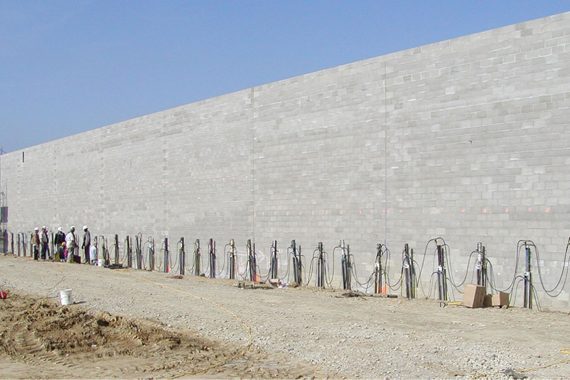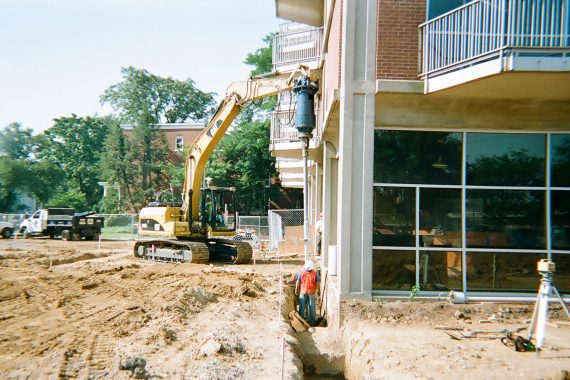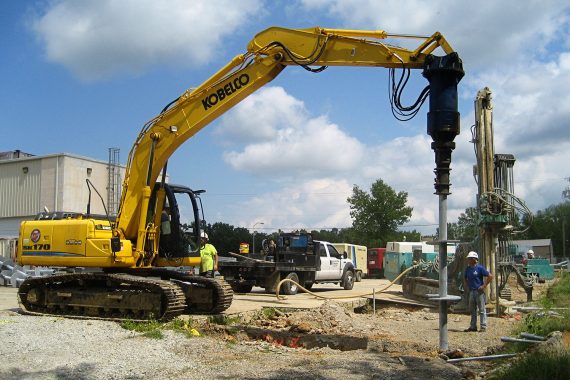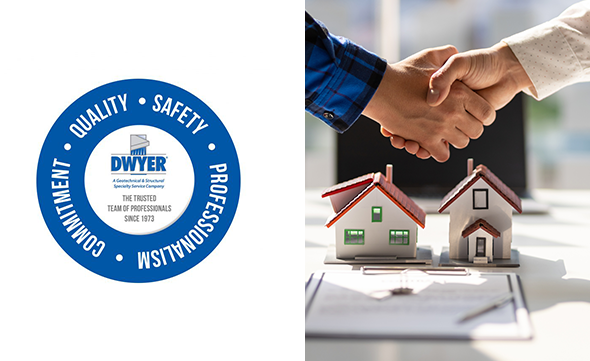In the previous blog post, we discussed the basics of hydrostatic pressure, including its impact on basement walls and foundations, as well as the signs to look out for. In this blog post, we’ll delve into effective strategies to alleviate hydrostatic pressure and safeguard your home foundations and your basement.
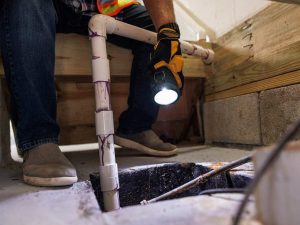
Improve Drainage Around Your Home
Effective water management starts with improving the drainage around your home. Ensuring that water flows away from your foundation is key. Implement measures like cleaning your gutters regularly and extending your downspouts further from your house. Additionally, considering the landscape’s slope is essential; adjusting the current grade of your yard to create a positive slope away from your home can significantly reduce the risk of water pooling near your foundation walls.
Interior Drainage Systems
For homes where exterior drainage might not be enough due to the high water table or heavy clay soils, an interior drainage system becomes a necessity. Installing a French drain system inside your basement involves creating a trench around the perimeter, laying a pipe, and covering it with gravel. This system collects water that seeps through basement walls and directs it to a sump pump, which then expels the water away from your home, effectively relieving hydrostatic pressure.
Sump Pump Installation and Maintenance
A sump pump is crucial in managing the water collected by your interior drainage system. Choosing a sump pump strong enough to handle your area’s water ingress and ensuring it has a battery backup for power outages can be a game-changer for homeowners. Regular maintenance and inspection of your sump pump are necessary to ensure it operates efficiently, especially during the rainy season when the load is heaviest.
Exterior Water Management Solutions
While interior solutions are effective, addressing the issue externally can further mitigate hydrostatic pressure. This includes installing exterior footing drains, which are similar to French drains but are located outside the foundation. Although more challenging to install in existing homes, they serve as an excellent preventative measure for new constructions. Additionally, proper yard grading and the installation of functional gutters and downspouts are crucial in diverting water away from your home’s foundation.
Sealing and Waterproofing Your Basement
It’s not just about managing water flow; you also need to create barriers to water entry. Applying waterproofing sealants to the interior walls of your basement can prevent moisture from seeping through. These sealants are typically applied to the interior surfaces of foundation walls, effectively reducing the amount of moisture that makes its way into your basement. For more comprehensive protection, consider installing a vapor barrier that covers your basement walls and directs any seepage water to the interior drainage system.
Repair and Reinforce Your Foundation
Chronic hydrostatic pressure can lead to foundation damage that needs more than just water management to fix. If your foundation has suffered from cracks or bowing, consult a foundation repair specialist. Solutions may include epoxy injections for cracks or the installation of structural supports to reinforce weakened walls.
For personalized advice and solutions for your basement and foundation issues, turn to The Dwyer Company, Inc. Count on us for all your basement waterproofing and foundation repair needs. Call us at (877) 399-3726, or fill out our contact form for a free quote.

